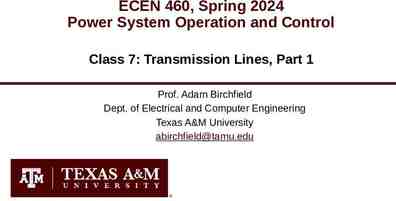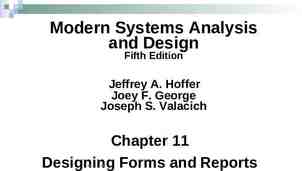ELECTRICAL SAFETY BASIC AWARENESS Per OSHA 29 CFR 1910 SUBPART
43 Slides3.36 MB

ELECTRICAL SAFETY BASIC AWARENESS Per OSHA 29 CFR 1910 SUBPART S PPT-008-02 Bureau of Workers’ Compensation PA Training for Health & Safety (PATHS) 1

Electrical Injuries AN AVERAGE OF ONE WORKER IS ELECTROCUTED ON THE JOB EVERY DAY! There are four main types of electrical injuries: Electrocution (death due to electrical shock) Electrical Shock Burns Falls PPT-008-02 2

Statistics U.S. Fire Administration US fire statistics on electrical fire causes (2002-2005) Factor contributing to ignition in reported structure fires Fires % unclassified electrical failure or malfunction 36,300 7 unspecified short circuit arc 21,400 4 short circuit arc from defective or worn insulation 11,400 2 arc or spark from operating equipment 4,000 1 arc from faulty contact or broken conductor 3,600 1 short circuit arc from mechanical damage 3,400 1 water caused short circuit arc 1,600 1 PPT-008-02 3

How is an Electrical Shock Received? When two wires have different potential voltages current will flow if they are connected. In most household wiring the black wires are at 110 volts relative to ground The white wires are at zero volts because they are connected to ground Contact with an energized (live) black wire while touching the white grounded wire ELECTRICAL SHOCK! PPT-008-02 4

Electrical Burns Are the most common shock related nonfatal injury Occur when you touch electrical wiring or equipment that is improperly used or maintained Typically occurs on the hands Very serious injury that needs immediate attention PPT-008-02 5

Falls Electrical shock can also cause indirect or secondary injuries. Employees working in an elevated location who experience a shock can fall resulting in serious injury or even death. PPT-008-02 6

Inadequate Wiring Hazards A hazard exists when a conductor is too small to safely carry the current. Example: using a portable tool with an extension cord that has a wire too small for the tool Tool draws more current than cord can handle overheating, possible fire without tripping the circuit breaker Circuit breaker could be the right size for the circuit but not for the smaller wire extension cord PPT-008-02 7

Hazards of Overloading Too many devices plugged into circuit wires heat to very high temperature possible fire. Wire insulation melts arcing may occur fire in area where overload exists (even inside a wall). PPT-008-02 8

Electrical Protective Devices Shut off electricity flow in the event of an overload or ground-fault in the circuit. Include fuses, circuit breakers, and ground-fault circuit interrupters (GFCI). Fuses and circuit breakers are “over current” devices (too much current fuses melt and circuit breakers “trip” open). PPT-008-02 9

Ground Fault Circuit Interrupter Protects you from dangerous electrical shock. Detects a difference in current between the black and white circuit wires (could happen when electrical equipment is not working properly causing a current “leakage” known as ground fault). Ground fault detected GFCI can shut off electricity flow in as little as 1/40 of a second protecting you from a dangerous shock. PPT-008-02 10

Examples: OSHA Electrical Requirements GROUNDING PATH The path to ground from circuits, equipment, and enclosures must be permanent and continuous. The violation shown here is an extension cord with the third/grounding prong missing. PPT-008-02 11

Examples: OSHA Electrical Requirements Hand-held electrical tools pose a potential danger because they make continuous contact with the hand. To protect you from shock, burns, and electrocution, tools must: o Have a 3 wire cord with ground and be plugged into a grounded receptacle or o Be double insulated or o Be powered by a low-voltage isolation transformer PPT-008-02 12

Guarding Live Parts Must guard “live” parts of electric equipment operating at 50 volts against accidental contact by: Approved cabinets/enclosures or Location or permanent partitions (thereby only accessible to qualified persons) Elevation of 8 feet or more above the floor or working surface Mark entrances to guarded locations with conspicuous warning signs PPT-008-02 13

Guarding Live Parts Where electrical equipment is in locations that it can suffer physical damage it must be guarded. The violation shown here is physical damage to conduit. PPT-008-02 14

Cabinets, Boxes, Fittings Junction boxes, pull boxes, and fittings must have approved covers. Unused openings in cabinets, boxes and fittings must be closed (no missing “knockouts”). Photo shows violations of these two requirements. PPT-008-02 15

Use of Flexible Cords Are more vulnerable than fixed wiring. Made be of industrial commercial quality. May not be used as permanent wiring. Improper use of flexible cords can cause shocks, burns, or fire. Approved by a recognized testing agency. PPT-008-02 16

Flexible Cords Uncoil an extension cord fully before use. Be sure the amperage of the cord is appropriate for the job you are doing. Do not use equipment that delivers mild electrical shocks, gives off unusual heat or smells odd. If in doubt, have it checked and repaired or replaced. PPT-008-02 17

Flexible Cords Extension cords shall not be fastened with staples, hung from nails, or suspended by wire. PPT-008-02 18

Permissible Uses of Flexible Cords Examples Pendant or Fixture Portable lamps, Stationary equipment Wiring tools or appliances to facilitate interchange PPT-008-02 19

Prohibited Uses of Flexible Cords Examples Substitute for fixed wiring Run through walls, ceilings floors, doors, or windows PPT-008-02 Concealed behind or attached to building surfaces 20

Electrical Extension Cords Homemade “Gang Box” Not allowed in work setting per OSHA: 29 CFR 1910.305 29 CFR 1926.405 PPT-008-02 21

Unsafe PPT-008-02 22

Unsafe PPT-008-02 23

Unsafe PPT-008-02 24

Unsafe PPT-008-02 25

Unsafe PPT-008-02 26

Unsafe PPT-008-02 27

Unsafe PPT-008-02 28

Top 5 – Electrical Fire Causes 1. Most electrical fires are caused by faulty electrical outlets and old, outdated appliances. Removing the grounding plug from a cord so it can be used in a two-prong electrical outlet can also cause a fire. PPT-008-02 29

Top 5 – Electrical Fire Causes 2. Light fixtures, lamps and light bulbs are another common reason for electrical fires. o Installing a bulb with a wattage that is too high for the lamps and light fixtures is a leading cause of electrical fires. o Always check the maximum recommended bulb wattage on any lighting fixture or lamp and never go over the recommended amount. PPT-008-02 30

Top 5 – Electrical Fire Causes 3. Misuse of extension cords is another electrical fire cause. o Appliances should be plugged directly into outlet and not plugged into an extension cord for any length of time. o Only use extension cords as a temporary measure. o If you do not have the appropriate type of outlets for your appliances, hire an electrician to install new ones. PPT-008-02 31

Top 5 – Electrical Fire Causes 4. Space heaters are a major cause of electrical fires. o Because these types of heaters are portable, many times people put them too close to combustible surfaces such as clothing, chairs, and rugs. o Coil space heaters are especially dangerous. I o f you do use space heaters, use the radiator-type that diffuse heat over the entire surface of the appliance. PPT-008-02 32

Top 5 – Electrical Fire Causes 5. Outdated wiring often causes electrical fires. o Breakers should be triggered when circuits get overloaded by too much electricity, o Outdated breaker boxes often have worn connectors that do not work, causing the system to overload and start an electrical fire. PPT-008-02 33

Safety Check the information on your cord. o Extension cords are labeled with valuable information as to the use, size and wattage rating of the cord. o Cords offered in many lengths and are labeled with size or “gauge.” Determine the gauge needed. All appliances indicate how much wattage is consumed when operated. PPT-008-02 34

Safety Decide whether you will be using the appliance indoors or outdoors. o Extension cords that can be used outdoors will be clearly marked “Suitable for Use with Outdoor Appliances.” Never use an indoor extension cord outdoors; it could result in an electric shock or fire hazard. PPT-008-02 35

Safety Determine how long you need the cord to be. A cord, based on its gauge, can power an appliance of a certain wattage only at specific distances. o As cord gets longer, the current carrying capacity of the cord gets lower. o Example: 16 gauge extension cord less than 50 feet in length can power a 1625 watt (W) appliance; 16 gauge cord that is longer than 50 feet can only power an appliance up to 1250W. PPT-008-02 36

Safety Place the cord correctly. o Do not place underneath carpets or heavy furniture. o Should not be tacked in place to a wall or taped down. o Should not be used while coiled or bent. o Match the length of the cord to the length of your needs. PPT-008-02 37

Training Train employees working with electrical equipment in safe working practices including: De-energizing electrical equipment before inspecting or making repairs Using electric tools in good repair Using good judgment when working near energized lines Using appropriate protective equipment (PPE) PPT-008-02 38

Summary Extension cords must be "of proper size and temperature rating to withstand the electrical load and approved by a recognized testing agency.” Locally purchased extension cords may not meet this standard. Always check applicable regulations/standards before buying or using extension cords at work. PPT-008-02 39

Summary Hazards Inadequate wiring Exposed electrical parts Wires with bad insulation Ungrounded electrical tools/systems Overloaded circuits Damaged power tools/equipment Overhead power lines All hazards are made worse in wet conditions! PPT-008-02 40

Summary PROTECTIVE MEASURES Proper grounding Using GFCI’s Using fuses and circuit breakers Proper use of flexible cords Training PPT-008-02 41

Contact Information Health & Safety Training Specialists 1171 South Cameron Street, Room 324 Harrisburg, PA 17104-2501 (717) 772-1635 [email protected] Like us on Facebook! https://www.facebook.com/BWCPATHS PPT-008-02 42

Questions PPT-008-02 43






